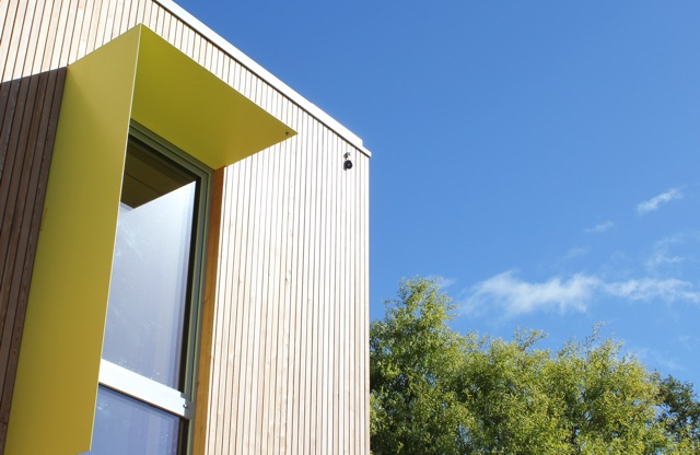Good ventilation can improve a whole range of problems in a building, such as damp, poor air quality, dust, and chemical pollutants. Poorly ventilated buildings filled with synthetic materials, trapped moisture, and particulates can lead to adverse health effects for occupants.
The key to healthier domestic environments must be a considered ventilation strategy argues Tomas Gaertner, Director of SE3Design.
His practice specialises in low energy and Passivhaus design, with an emphasis on healthy interior environments. In a new CPD module for the RIBA, Low Carbon Policy, Energy Poverty, Wellbeing, Gaertner goes into great detail about many aspects of sustainable design, including ventilation strategies.
Why is air quality important?
Air quality is a relatively recent problem for dwellings, believes Gaertner. Prior to the 1960s, paints and finishes were largely mineral-based, whereas studies have shown that today 95% of building materials contain petrochemicals as ingredients, treatments, or additives. This has given rise to well-known problems with volatile organic compounds (VOCs) and “off-gassing” (chemical emissions in gaseous form) after construction work.
Traditional paints, finishes, and renders tended to be permeable and allowed moisture transfer, which avoided problems such as mould and fungus associated with damp. But modern finishes are likely to be impermeable and will act as vapour-resistant barriers, preventing walls from acting as buffers to regulate humidity levels.
Studies have shown that internal relative humidity levels will rise and fall dramatically in many modern buildings, leading to problems associated with damp; while off-gassing from building materials continues for long periods of time without adequate air circulation.
Dust and particulates will also stay in circulation without adequate ventilation. The smaller they are, the longer they hang in the air and the more damaging they are likely to be to our health. Adverse health effects from dust and air-borne pollutants are legion and well documented; the UK has one of the highest asthma rates worldwide.
Mechanical ventilation and other strategies
Gaertner always opts for a designed ventilation system, such as mechanical ventilation with heat recovery (MVHR) where the budget allows for it. This is not air conditioning, but a fan-assisted system that incorporates a heat exchanger which feeds air into habitable rooms and typically removes it via kitchens or wet rooms.
He also flags up the availability of compact through-the-wall ventilation/heat recovery units that will each supply an individual room with fresh air while retaining over 90% of its heat. These are available with air filters for homes near busy roads or other sources of pollution; while their compact size makes them well suited to retrofits.
However, a ventilation strategy need not be complex. The main point is that ventilation opportunities should be maximised and occupiers given the means to control ventilation effectively. This might simply mean ensuring that windows are openable and capable of providing sufficient natural ventilation.

A complete air change can be typically achieved in 12 to 20 minutes in summer where there is cross ventilation (where there are pressure differences between one side of a building and the other). This might stretch to 3 to 6 hours in a single aspect apartment with tilt windows where cross ventilation is not available. He adds that his practice would normally avoid trickle vents, which he finds are leaky and difficult to close.
Gaertner believes that the target values for air changes specified by Building Regulations ought to be regarded as the bare minimum. They are based on the presumption that people are moving around the building to assist circulation.
This might be true during the daytime, but CO2 levels in bedrooms at night can be 50% higher than target levels (CO2 is measured here as an indicator of rates of air change, rather than as a harmful gas). There is also a tendency in the UK to overestimate effective ventilation rates.
Other complementary strategies
Ventilation controls can be highly sophisticated in their monitoring and controlling of temperature, CO2/air change rates and relative humidity in high performance buildings, or relatively simple. Gaertner stresses they are only effective when properly understood by users, who may be afraid to tamper with too sophisticated controls. His practice favours a simple control set at a constant air change rate with a timed booster option for general use.
Humidity buffering materials, including those in the building structure such as brickwork and timber, help to regulate humidity. But they only work effectively when they are not sealed. Traditional finishes - lime-based, mineral, and clay-based - keep surfaces hygroscopic.
Radiant heat sources will heat floors, walls and building mass, but will not churn dust and particulates the way convection heating systems do. Radiant systems also create environments that are comfortable at lower air temperatures.
To learn more about air quality and ventilation, visit the RIBA’s CPD Academy where you can watch Tomas Gaertner’s CPD module Low Carbon Policy, Energy Poverty, Wellbeing.
Thanks to Tomas Gaertner, Director, SE3Design.
Text by Neal Morris. This is a Professional Feature edited by the RIBA Practice team. Send us your feedback and ideas.
RIBA Core Curriculum topic: Sustainable Architecture.
As part of the flexible RIBA CPD programme, professional features count as microlearning. See further information on the updated RIBA CPD core curriculum and on fulfilling your CPD requirements as a RIBA Chartered Member.









